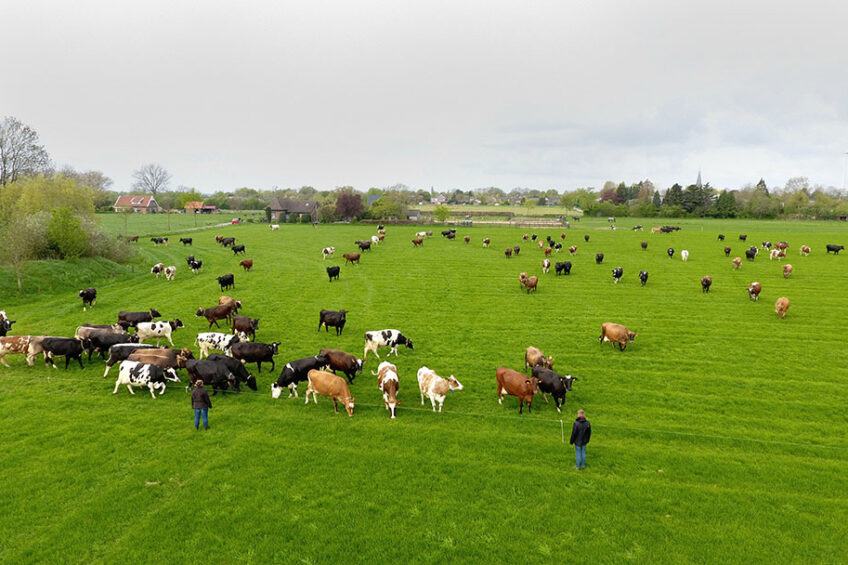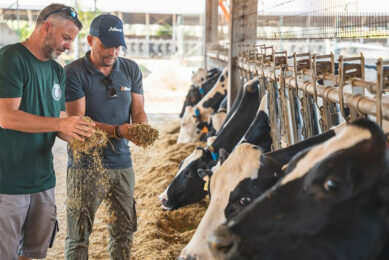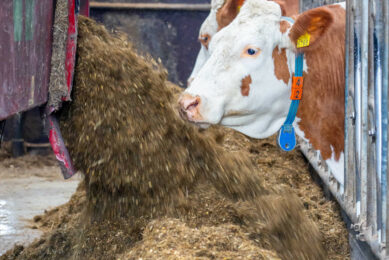US organic dairy farmers receive some relief for high feed costs

For 2 years, feed prices have been jaw-dropping for organic dairy farmers in the US, putting the existence of some farms in very real peril.
“Starting in early 2021 and into 2022, we saw the price of organic feed crops escalate in a way that we’d never seen,” says Adam Warthesen, senior director of government and industry Affairs for Organic Valley, a cooperative of about 1,500 US dairy farmers all across the northern part of the country, from Maine to Oregon.
“If you look at the comparison of prices from 2019 and 2020 to the following 2 years, 2021 and 2022, we had a rise of costs for the organic livestock industry of USD$825 million, which was basically a doubling in feed costs,” said Warthesen.
This perfect storm of rising costs came together partly because the US domestic supply of organic feed crops was also tight over the last 3 years due to drought in various areas.
India’s role in feed supply
But a good portion of organic grain for US dairy cows is imported. The war in Ukraine negatively impacted organic crop production last year, making the global supply of these commodities tighter and driving prices up. Also, due to the war in Ukraine, European demand for Indian organic soybeans surged and left many US farmers scrambling, as most of the organic soybeans and meal used by US organic dairy farmers come from India.
“At the same time, the US also had a trade dispute with India that started in 2021,” Warthesen notes. “The US government accused crushers in India of dumping soybean meal on the US market, and a trade court ruling confirmed this. Organic dairy and poultry producers here got caught in the middle. And this came at a period when inflation spiked, and organic product prices at retail could not be increased too much. They still can’t be increased at this time. We have loyal customers, but as our nation is expected to experience some recessionary pressures, every consumer will be more careful with their spending. If we increased prices, losing customers would likely result.”
As a result, the ‘Organic Feedstuffs Trade Relief Task Force’ was initiated in 2022 by the US Organic Trade Association (Warthesen is a co-chair). The task force met with congressional leaders along with the US Department of Agriculture (USDA) officials and asked for relief, which was granted.
Help for organic dairy farmers
In May, the USDA announced the new Organic Dairy Marketing Assistance Program (ODMAP) for organic dairy farmers (cows, goats or sheep) to help mitigate market volatility, higher input and transportation costs, and unstable feed supply and prices “that have created unique hardships in the organic dairy industry”.
USDA’s Farm Service Agency administrator, Zach Ducheneaux, stated in May that “without assistance, many organic dairies, particularly small organic dairies, will cease production, which impacts not only the domestic supply and consumption of organic milk but also the well-being of many rural communities across the country. This programme will keep our small organic dairies in operation as they continue to weather a combination of challenges outside of their control.”
Warthesen explains that all 2,500 organic farmers in the US have experienced a unique shock that has exposed sector vulnerabilities.
“We don’t have adequate risk management tools, and there is not even adequate data collection by the USDA about marketing and production on which someday those tools might theoretically be based,” he says. “Without this assistance, some US organic farmers might go to conventional, but they have small herd sizes and a business model of producing a premium product for premium prices. It would be extremely hard for them to compete with conventional producers, even with rapid investment to increase herd size, increase milking equipment capacity and make other changes. Even with this USDA relief, we may still lose these small family-run operations from rural America and once they are gone, they are gone. Our customers want the organic products but also support these farms to continue to operate, and we hope this relationship can continue.”
Adequate programme
From the total US$104 million of the programme, ODMAP provides a one-time cost-share payment to applicant farmers based on marketing costs on pounds of organic milk marketed in the 2022 calendar year. However, Warthesen explains that this payment at US$1.10 a hundredweight would max out at US$50,000.
“Most organic dairy farms will see much less,” he says. “Organic Valley’s average farm is 80 cows, and that’s probably a payment closer to US$13,000. Unfortunately, it will not be enough to cover average costs being shouldered by farmers.”
Warthesen explains the USDA calculated the payment rate using market data that reflected conventional dairy costs to get their milk to the raw processors. However, organic farmers have higher hauling charges. Organic milk has to be transported to a certified processor, which is generally further away than conventional processors. Also, there are more stops for the organic milk tank trucks because organic farms are smaller. “So, a larger payment is needed to appropriately reflect that reality,” says Warthesen. “Our company has joined with 5 others and we are working to point this out to the USDA for the next round of funding allocation.”
Other parts of the solution
Meanwhile, Organic Valley dairy farmers are receiving lots of support from their cooperative to get the most out of their feed. “The effects of these enormous feed cost increases on individual farmers have varied, and the more self-sufficient you are with producing your own feed, the less you have to buy and the better you are,” says Warthesen. “Our member farmers have already had to cull cattle, and they’ve tried to find feedstuffs that don’t cost as much (but reduce milk production) and taken out loans. But we are also providing support with getting more out of the existing grazing.”
To support intensive rotational grazing, in 2021, Organic Valley launched a pilot programme that uses satellite imagery and a computer software program to estimate pasture growth and health in real time for their dairy farms. This voluntary programme takes daily photos of a farm’s grazing paddocks and overlays that with a vegetative index to calculate the level of vegetation in each paddock and converts that into an estimate of available feed per paddock.
Organic Valley members can also lean on field and professional staff – nearly 30 people nationwide – who provide guidance to get maximum yields of forages and also to ensure stocking rates are in line with available feed and high-quality animal care expectations. This work includes farm field days, feed nutrition consulting, and other educational activities that are geographically specific.
And, as an organisation, Organic Valley is always trying to build its sale and distribution of products. During this crisis, there has been a particular focus on determining the right product channels for their milk throughout the year to maximise profits for each farmer member, such as fluid milk, cream, cheese and also ingredients for other organic products.
Outlook for existing feed costs
When asked about how this year will unfold in terms of the existing feed cost pressures, Warthesen says the prices of Ukraine grains have come down a little, but not enough to really make a difference to US organic farmers. It is not known whether the recent explosion of the Nova Kakhovka dam may have had a negative impact on crop production in terms of flooded farmland.
“With regard to imports from India, the anti-dumping duties could last a while,” says Warthesen. “We’re also now getting increased drought monitor warnings for this growing season in parts of the US. So the situation will stay serious for US organic dairy farmers for some time to come. Farmers own this cooperative, so we are all looking for solutions to alleviate farm pressures and, as important, inspire consumers to choose healthy organic milk for their dining table.”
Join 13,000+ subscribers
Subscribe to our newsletter to stay updated about all the need-to-know content in the dairy sector, two times a week.










